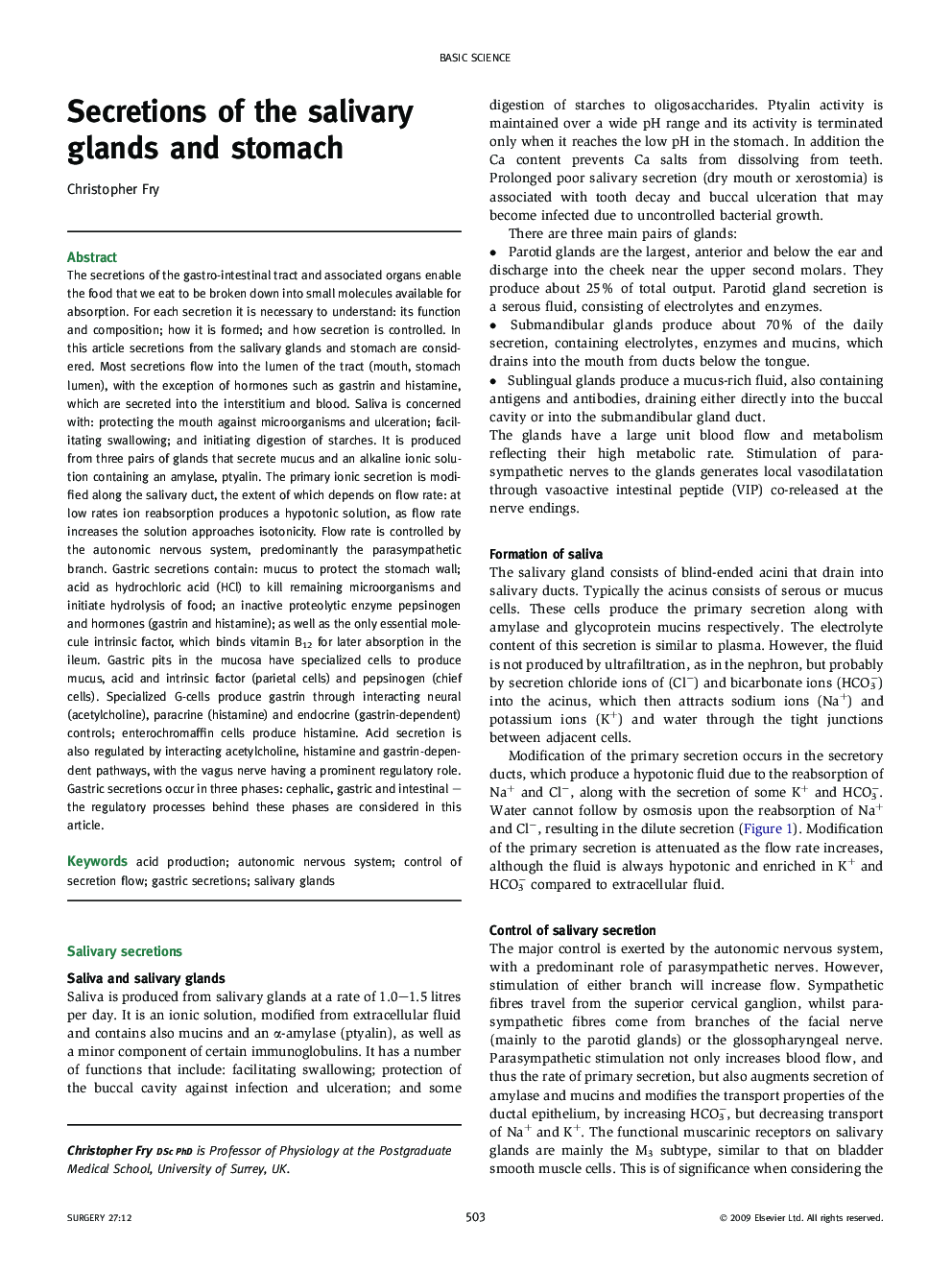| کد مقاله | کد نشریه | سال انتشار | مقاله انگلیسی | نسخه تمام متن |
|---|---|---|---|---|
| 3839597 | 1247800 | 2009 | 4 صفحه PDF | دانلود رایگان |

The secretions of the gastro-intestinal tract and associated organs enable the food that we eat to be broken down into small molecules available for absorption. For each secretion it is necessary to understand: its function and composition; how it is formed; and how secretion is controlled. In this article secretions from the salivary glands and stomach are considered. Most secretions flow into the lumen of the tract (mouth, stomach lumen), with the exception of hormones such as gastrin and histamine, which are secreted into the interstitium and blood. Saliva is concerned with: protecting the mouth against microorganisms and ulceration; facilitating swallowing; and initiating digestion of starches. It is produced from three pairs of glands that secrete mucus and an alkaline ionic solution containing an amylase, ptyalin. The primary ionic secretion is modified along the salivary duct, the extent of which depends on flow rate: at low rates ion reabsorption produces a hypotonic solution, as flow rate increases the solution approaches isotonicity. Flow rate is controlled by the autonomic nervous system, predominantly the parasympathetic branch. Gastric secretions contain: mucus to protect the stomach wall; acid as hydrochloric acid (HCl) to kill remaining microorganisms and initiate hydrolysis of food; an inactive proteolytic enzyme pepsinogen and hormones (gastrin and histamine); as well as the only essential molecule intrinsic factor, which binds vitamin B12 for later absorption in the ileum. Gastric pits in the mucosa have specialized cells to produce mucus, acid and intrinsic factor (parietal cells) and pepsinogen (chief cells). Specialized G-cells produce gastrin through interacting neural (acetylcholine), paracrine (histamine) and endocrine (gastrin-dependent) controls; enterochromaffin cells produce histamine. Acid secretion is also regulated by interacting acetylcholine, histamine and gastrin-dependent pathways, with the vagus nerve having a prominent regulatory role. Gastric secretions occur in three phases: cephalic, gastric and intestinal – the regulatory processes behind these phases are considered in this article.
Journal: Surgery (Oxford) - Volume 27, Issue 12, December 2009, Pages 503–506